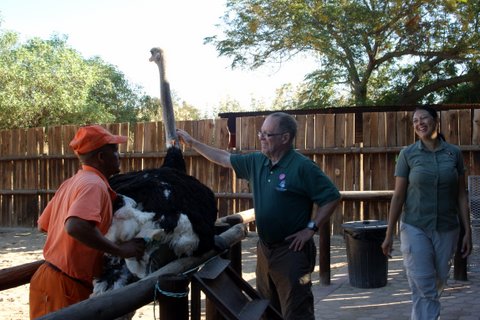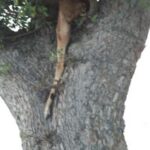 I connected some dots today in my tour from Knysna to Hermanus.
I connected some dots today in my tour from Knysna to Hermanus.
The first was with Portugal. While it is sometimes difficult to remember, Portugal was a world power over 500 years ago. In fact, it was a Portuguese explorer, Bartholomew Diaz who was the first European to discover the Cape of Good Hope. There was a Diaz museum on Moosell Bay, which was on our way; I knew I had to pay homage.
We stopped at the museum, to the joy of my guide—who’d never had another request from a tour group to stop there. The piece de résistance was a recreation of one of the caravels that Diaz and his crew sailed from Portugal around the Cape (which he initially called the Cape of Storms; King Joao II, a better marketer, gave it its new name), a journey that took six months. It is astonishing how small it is—under 100 feet, with a crew of 33, and a totally undifferentiated hold. Tis said the crew slept on deck, rather like my Scouts have done in the Keys.
The recreated caravel was a gift of the Portuguese, who built it in 1988—the 500th anniversary of the original voyage—and did the trip in three months—probably because they added a privy (is that a poop deck?), bunks, and a galley.
Diaz was blown off course and landed in Moosell Bay, which he called Sao Bras (St. Blais), and because it had a spring, was one of the standard refueling stops on the route eventually charted by Vasco da Gama. As for Diaz, though he reached the Cape, da Gama reached India, and on the next voyage in 1502, Diaz was again blown off course and drowned.
As for the Portuguese, they not only reaped the benefits of the India trade (and acquired an empire across the world), one of their explorers detoured from the Azores to discover Brazil, which has led to Portuguese being the fourth most spoken language despite their being only about 12 million in Portugal.
Portugal’s claim to South Africa, as I’m sure I’ll document later, vanished as the Dutch-English rivalry took over.
Our second dot was a stop at the Garden Route Game Lodge, which was a two hour drive through a game preserve. It might have had more impact had I not been in a real game reserve because what it was was basically a zoo. The reserve was the brainchild of two families who bought a lot of farmland and restored it to sort of a veld, and added game animals. We were in a Land Cruiser and were able to see animals close up, including a white rhinoceros and a male lion. The lions were in their own quarters, separated by an electric fence, because if they were mixed in with the other animals, the tour guide observed, “we’d have no animals left before long.” The lodge sends some animals into the lion area periodically, so the lions get to hunt.  I suppose the good thing is that customers are guaranteed to see animals (not the case in the bush), and that the animals are conserved.
I suppose the good thing is that customers are guaranteed to see animals (not the case in the bush), and that the animals are conserved.
Tonight I’m staying at a posh upscale hotel in Hermanus, the Marine. Brad Pitt stayed here last year according to the publicity, and I wonder what they’ll say next year about my having been here this year?





























